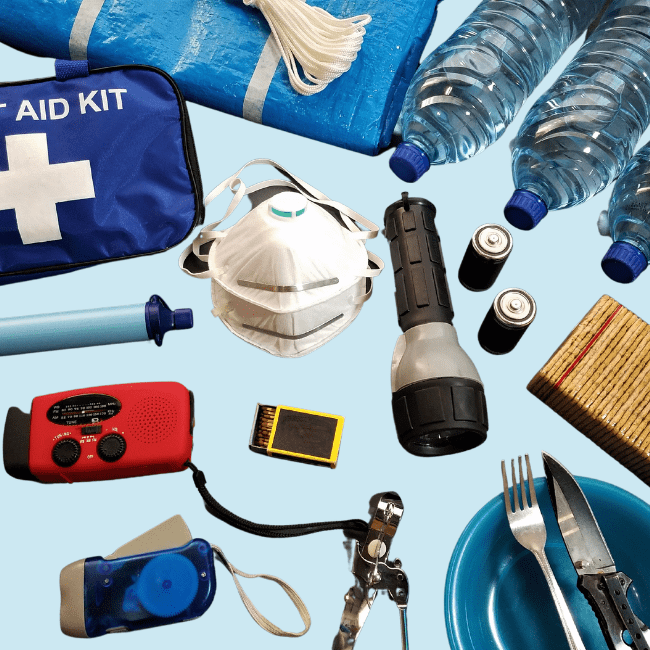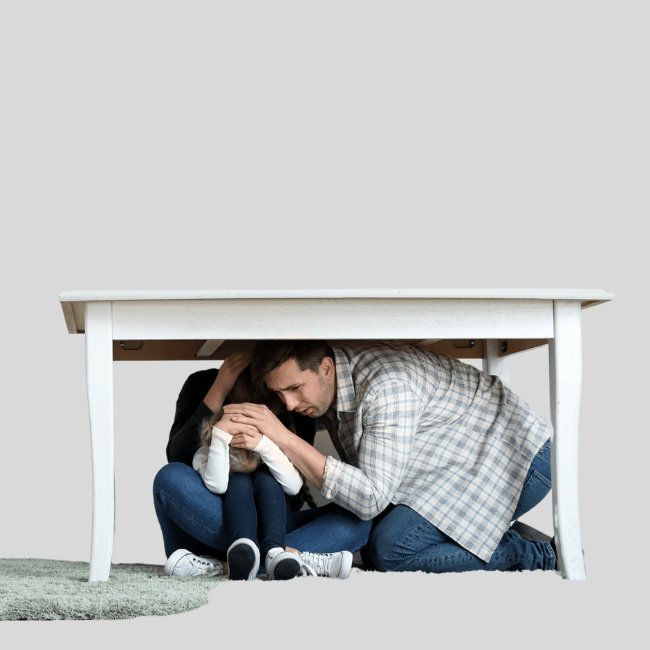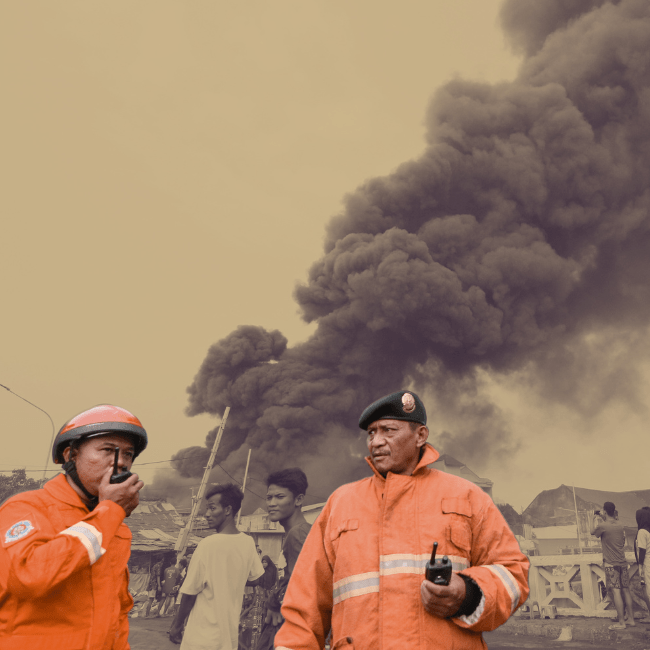Quake 101: Earthquake Preparedness

What to do before, during, and after shaking?
The steps you take before an earthquake may have the biggest impact on your safety and the protection of your personal property.

Before
Step one
Identify the safe spots inside your house, building, or wherever area you are located.
Step two
Clean doorways and exits of heavy furniture to ensure everyone’s quick evacuation.
Step three
Assemble an emergency supply kit and make it accessible at all times.
Step four
Keep a list of emergency numbers of authorities as well as relatives and friends in case of a need for help.
During

With an earthquake shake alert, you may only have seconds to activate your emergency plan. That is enough time to shelter in place.
Stay Calm
When an earthquake starts, Drop, Cover, and Hold On.
Supply Checklist
Grab your emergency preparedness kit. Shelter on the ground under a table or desk.
Move to a Safer Place
If you’re home, don’t leave. Avoid the kitchen, where heavy items could fall from shelves or out of cabinets. If you’re in bed, cover your head and neck with pillows.
When Outside
If you’re outside get away from buildings that may collapse. Stay in an open area like a field where there are no trees, buildings, or power lines. If you’re at school, work, or any area with an elevator, don’t take the elevator. Take the stairs.
After

Many injuries occur after an earthquake. Aftershocks— following large quakes—can cause damage in their own right. Follow this list of earthquake survival tips:
Assess the Situation
Check yourself and others for injuries and provide first aid for anyone who needs it. Call 9-1-1 and National Disaster and Risk Reduction and Management Council (NDRRMC) hotlines for seriously injured people.
Establish Communications
Listen to the radio for important information and instructions. Coordinate with family, friends, and community as a report, save battery, and keep conversations short.
Care for Others
Avoid smoking inside buildings and do not use matches, candles, or any flammable materials.
Move to a much safer area
Stay out of damaged buildings and be careful around broken glass and debris. Use stairs, not elevators.
Stay alert
Expect and be ready for any aftershocks. Be aware of secondary hazards: flooding, tsunamis, and landslides.
Additional Preparedness Notes
- Regularly practice the evacuation procedure
- Create an earthquake safety plan for you and your loved ones, including pets
- Check for possible injuries
- Always be prepared for additional aftershocks
- Be aware of secondary hazards such as floods, tsunamis, and landslides
Stay calm and be alert!
Kristen sees writing as her way of expressing not only her emotions, but also the things she cannot express orally—they are her source of growth and individuality—not linear, but continuing. For her, in order to be heard, you must first listen. A visual story-teller where everyone is seen, heard, and valued—uses her photographs to create a narrative, to uplift and acknowledge triumphs and failures.











